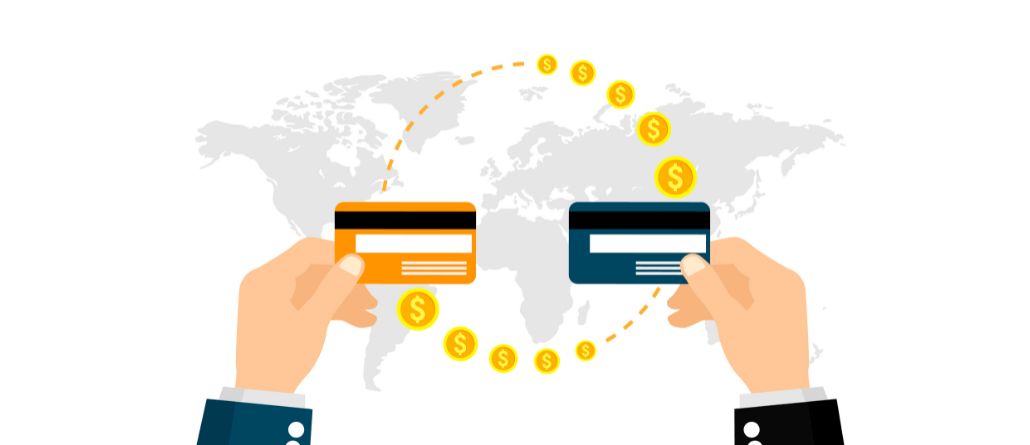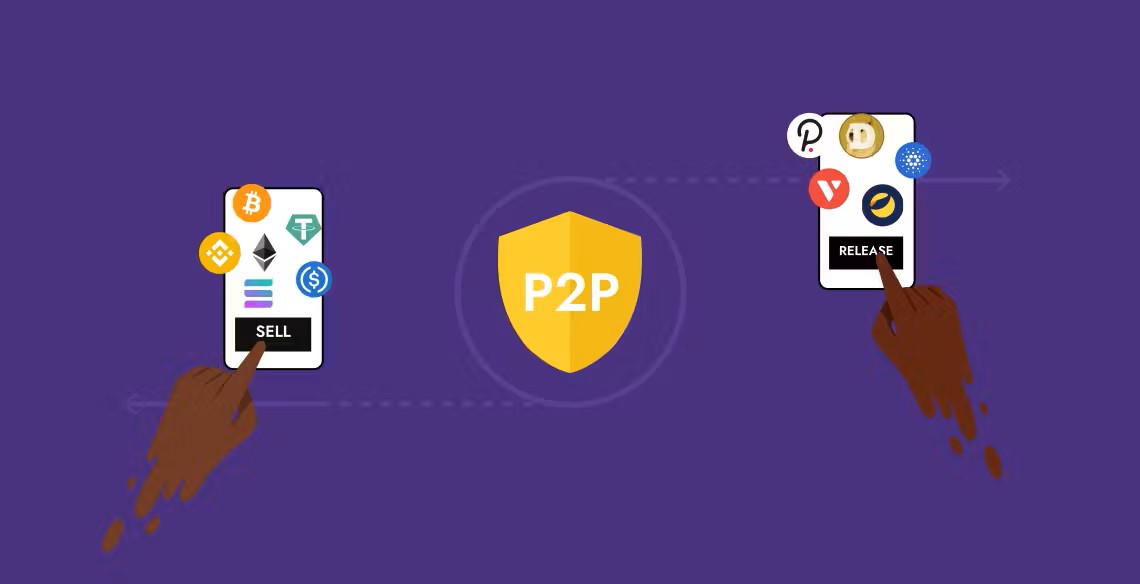In the modern world, financial technologies are rapidly developing, offering users new ways to manage their funds. One of these innovative areas is peer-to-peer (P2P) trading. P2P systems are decentralized networks where users interact directly with each other without the participation of intermediaries such as banks or centralized platforms. This makes P2P trading increasingly popular, providing unique opportunities for buying and selling cryptocurrencies and fiat currencies.
P2P trading differs from traditional centralized financial systems in that it enables direct transactions between users, minimizing fees and speeding up the exchange process. Unlike centralized P2P exchanges, P2P trading allows users to control their funds, which increases the level of trust and security in trading.
How P2P Trading Works

The mechanics of P2P trading are based on direct transactions between users. Unlike traditional exchanges, there are no intermediaries, which allows for lower fees and faster exchanges. The main steps of P2P transactions include:
- Offer selection: Users select a suitable offer from sellers or buyers on the P2P exchange. This can be a purchase or sale of cryptocurrency at a convenient rate.
- Confirmation of the transaction: After selecting an offer, users confirm their intentions and proceed to transfer funds. This stage includes checking the terms of the transaction and agreeing on the details.
- Funds Transfer Process: Funds are transferred through escrow accounts, which ensure the security of the transaction until it is completed. Smart contracts are often used to automate this process, ensuring that both parties fulfill the terms of the transaction.
Smart contracts and dispute resolution systems are used to ensure the security of P2P transactions. Escrow accounts hold funds until both parties confirm that the terms of the transaction have been met, which minimizes the risk of fraud. In addition, P2P exchanges implement various security measures, such as two-factor authentication and monitoring of suspicious activity.
Advantages of P2P Systems
P2P trading offers many advantages over traditional financial systems:
- No or minimal fees : Since trades are made directly between users, fees are significantly lower, making trading more profitable.
- Direct interaction : Users can interact without the involvement of banks and centralized platforms, making the process more flexible and independent.
- Fast transaction speed : On average, P2P transactions take about 10 minutes, and users can choose the best exchange rate, which increases trading efficiency.
- Flexibility in currency selection : The ability to work with different cryptocurrencies and fiat currencies such as EUR expands the options for users.
- Improved privacy : P2P trading provides a higher level of privacy as users are not required to provide their data to centralized platforms.
How to Make Money on P2P Trading

Arbitration
Arbitrage involves buying cryptocurrency at a low price on one platform and selling it at a higher price on another. For example, you can buy USDT on Binance P2P and sell it on another P2P exchange for a profit. This is possible due to the difference in exchange rates between different P2P platforms. Finding profitable orders requires attention and quick response to market changes.
Example of a Successful Deal
Let’s say you bought USDT on P2P exchange A at a rate of 1 USDT = 1 EUR and sold it on P2P exchange B at a rate of 1 USDT = 1.05 EUR. This difference in exchange rates will allow you to make money on the price difference. It is important to consider fees and the time it takes to transfer funds between platforms to ensure real profit.
Working with Volatility
Cryptocurrency markets are characterized by high volatility. Sharp price fluctuations create opportunities for profit. For example, buying cryptocurrency when the price falls and selling it when it recovers allows traders to benefit from market volatility. However, this method requires a deep understanding of the market and the ability to react quickly to changes.
Investments in P2P Trading
Some users choose to invest in P2P trading, using their funds to provide liquidity to other users. In return, they receive a percentage of transactions or a fixed profit. This method requires minimal involvement and can be less risky than active trading.
Benefits for Traders

P2P trading offers traders many benefits:
- Currency Variety : The ability to trade multiple cryptocurrencies and fiat currencies such as EUR expands the range of instruments available for trading.
- Wide range of offers : Access to offers from different users, allowing you to choose the best deal conditions. This includes a choice of sellers and buyers with different rates and conditions.
- Privacy and Decentralization : Transactions remain private and independent of government regulators, allowing for greater flexibility in trading.
- Low fees : Fees for P2P trading are significantly lower, making this trading method more profitable.
- Control over funds : Users retain full control over their funds as transfers occur directly between them, without the involvement of intermediaries.
Legal and Tax Aspects of P2P Trading
Legal and tax aspects play an important role in P2P trading:
Legal Regulation
P2P trading is regulated differently in different countries. Some countries have strict laws that restrict P2P trading, while others may be more liberal. For example, in countries with developed financial systems, such as the US and EU countries, P2P trading is subject to strict rules and requires compliance with anti-money laundering (AML) and know-your-customer (KYC) regulations. While in some developing countries, P2P trading may be less regulated, opening up new opportunities for users.
Tax Law
Income from P2P trading is subject to taxation in most countries. Traders need to be aware of their tax obligations and declare their income correctly. Some countries have tax incentives for investing in cryptocurrencies, but it is important to consult a tax advisor to avoid fines and penalties.
Examples of Countries
In countries with financial restrictions, such as Turkey or Argentina, P2P trading is especially in demand, as it allows bypassing restrictions on access to international financial services. In such conditions, P2P exchanges are becoming a popular tool for preserving and increasing capital, providing users with access to the global financial network.
Tips for Minimizing Risks and Choosing Reliable Platforms
- Choose trusted platforms : Use well-known P2P exchanges like Binance P2P that have a good reputation and user protection systems. Pay attention to user reviews and ratings.
- Use escrow accounts : This will keep your transfers safe and protect you from fraud. Escrow accounts hold funds until both parties confirm that the terms of the transaction have been met.
- Check user ratings : Before making a deal, check the ratings and reviews of the users you plan to work with. A high seller or buyer rating indicates their reliability.
- Monitor exchange rates : Use the best order finder to get the best price when buying and selling. This will help maximize your profits.
- Educate yourself : Study articles and videos on P2P trading to stay up to date with the latest trends and earning strategies. Knowing the market and trading tools will help you make more informed decisions.
- Use two-factor authentication (2FA) : This will increase the security level of your P2P exchange account, protecting it from unauthorized access.
- Do not disclose personal information : Be careful with personal information and do not provide it to sellers or buyers to avoid fraud and identity theft.
- Diversify your trades : Don’t put all your money into one trade or one cryptocurrency. Diversification will help reduce risk and increase income stability.
- Stay up to date with the law : Stay up to date with legal changes in your country regarding P2P trading and cryptocurrencies to avoid legal issues.
P2P trading opens up new horizons for users, offering flexible and profitable ways to trade cryptocurrencies. By following the tips provided and choosing reliable P2P platforms, you can successfully use the opportunities of this innovative financial system. It is important to be aware of the risks and constantly improve your knowledge and skills to remain successful in the rapidly changing world of cryptocurrencies and P2P trading.
The Future of P2P Trading
P2P trading continues to evolve, introducing new technologies and improving user experience. With the development of smart contracts, decentralized applications (dApps) and blockchain technologies, P2P platforms are becoming more secure and efficient. In addition, the growing popularity of cryptocurrencies and the increase in the number of users are stimulating further expansion of P2P trading on a global level.
In the future, we can expect new risk management tools, improved dispute resolution mechanisms, and faster transactions. P2P trading will become even more accessible and user-friendly, offering expanded opportunities to earn and manage your funds.
Final Thoughts

P2P trading is a powerful tool for users seeking flexibility and independence in the financial sphere. Due to its unique advantages, such as low fees, high transaction speed and the ability to work with various cryptocurrencies, P2P trading is becoming increasingly popular.
However, like any other type of trading, P2P trading requires care, knowledge, and safety precautions. Users should carefully select P2P exchanges, use escrow accounts, check seller and buyer ratings, and be aware of the legal and tax aspects of trading.
With the right approach and ongoing training, P2P trading can be a reliable and profitable way to earn money, opening up new opportunities in the world of cryptocurrencies and financial technologies.
Автор Evgeniy
IT entrepreneur. I consult the Buycrypt team on organizing a decentralized economy. I develop a strategy for bringing the token's value proposition to the market. I work on mathematical models: - increasing the efficiency of fund trading using the method of collective decision-making. - trader's IQ for weighing the impact on a collective decision. - calculating the fairness of income and contribution distribution. - predictive algorithm based on mass reactions. - decision-making system and organization of input/output of assets.
